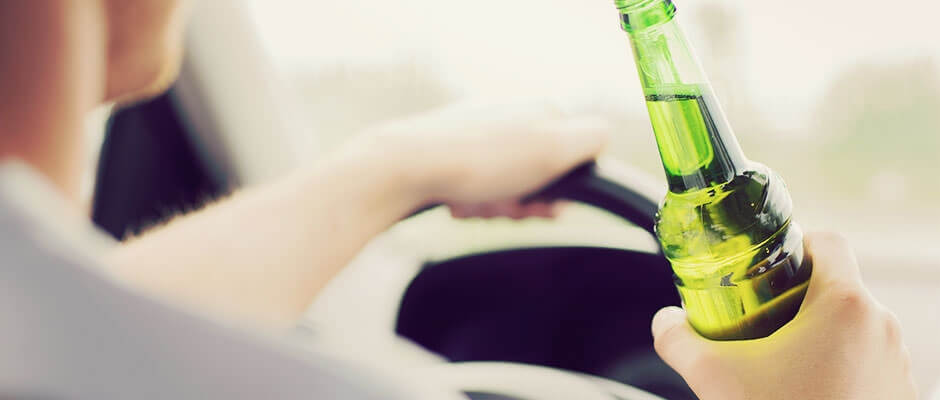You may have noticed a theme developing in our recent Safer Driving blogs: we’re focusing on drink driving. In this blog we take a look at approaches to drink driving around the world and we also look at some eye-opening drink driving trends in the UK, which relate to under 25s and women.
While deaths from drink driving in the UK are at their lowest rate since the drink drive limit was set in 1967¹, drink driving laws vary from country to country, with many countries having no law at all.
In 2013 the World Health Organisation (WHO) compiled a Global Status Report on Road Safety, looking at road safety trends across the world, one of which was drink driving. While here in the UK we have very strict drink driving laws, the Report revealed that 34 countries around the world have no drink driving law at all or use laws not based on Blood Alcohol Content (BAC), and so are less robust². The same report also found that only 52% of countries surveyed could provide some data on alcohol-related fatal road crashes³.
So the drink driving picture is vastly different from country to country and different laws apply, depending on where in the world you live.
Add to the mix that while alcohol consumption in Europe is decreasing, according to WHO, it is the highest in the world with Europeans drinking almost twice the world average amount of alcohol⁴. So it is not necessarily the case that the more a country drinks, the more its inhabitants are likely to drink and drive.
Under 25s and drink driving
Drink driving also remains a particular problem for specific groups, particularly for drivers under the age of 25 and increasingly, for women.
Piernicola Pedicini, a Member of the European Parliament’s Environment, Public Health and Food Safety Committee says: “One in four road traffic accidents in the EU is alcohol-related and account for more than 10,000 road deaths per year – young people between the ages of 18 and 24 are particularly at risk”.
This is supported by the European Union’s Global Status Report on Road Safety which states “Young and novice drivers who drink and drive have a greatly increased risk of a crash compared to more experienced drivers”⁵.
According to the Association of Chief Police Officers (ACPO), in 2013 4.41% of the 37,940 breath tests administered to drivers under 25s were positive, failed or , compared to 3.21% of the 139,550 breath tests administered to over 25s which were positive, failed or refused⁷. While the overall number of drivers under 25 testing positive for alcohol fell marginally between 2011 and 2013, more under 25s tested positive than over 25s⁸.

Women and drink driving
Perhaps most alarming, is the recent research from Social Research Associates (SRA), a consultancy which compiled a study in 2013 entitled ‘Women and Drink Driving’, launched on 9th September by Clare Perry MP, Under Secretary of State for Transport. The research found that almost one in five (17 per cent) of female motorists thought they might have driven whilst over the legal limit in the past year⁹. It also found that drink driving convictions received by women had risen to 17 per cent in 2012, up from 9 per cent in 1998¹⁰.
Despite the launch of UK-wide government advertising campaigns explaining alcohol units, the research revealed a lack of awareness amongst women drivers about how much alcohol could legally be consumed before driving and half said they did not know the legal limit.
That said, men are still responsible for the majority (83%) of drink driving offences¹¹. According to SRA, “Although men are still [responsible for] the majority [of drink driving offences], women’s convictions for drink driving are increasing as a proportion of all convictions (up by 16%) whilst male rates are falling (down by 24%)”. This may not just be because women are drinking more, but also because there are more women driving and there are an increasing number of families with more than one car for example.
So what are the recommended solutions to the global drink driving issue and how can we reduce the number of young drivers and women who are testing positive for alcohol while driving?
SRA’s recommendations, following the research, were to lower the breathalyser limit, give clarity about wine measures in terms of units of alcohol content, provide more analysis of drink drive statistics by gender and to emphasise that drink driving is not just a male problem in road safety messages.
WHO believes that one of the solutions is to enforce more stringent drink-drive laws for those considered high risk such as inexperienced young drivers who are “more than twice as likely to have a road traffic crash than more experienced drivers driving with a BAC level of 0.05 g/dl”.
WHO advocates setting lower BAC limits of 0.02 g/dl or less for young and inexperienced drivers as an “effective means of reducing crashes related to drink–driving”. It says that 42 countries already apply BAC limits of 0.02 g/dl or less among young and novice drivers.
But time will tell whether lower BAC limits will see a reduction in countries’ drink driving statistics and any enforcement of a law which prohibits alcohol consumption prior to driving must surely be a positive step forward. Perhaps the solution would be to enforce a global or at the very least European zero BAC limit, to bring consistency between countries and allow for better gathering of data.
Sources:
[1] https://www.gov.uk/government/news/92-of-people-feel-ashamed-to-drink-and-drive-as-50th-anniversary-think-campaign-is-launched[2] [3] [5] http://www.who.int/violence_injury_prevention/
road_safety_status/2013/report/en/
[4] http://www.euro.who.int/__data/assets/pdf_file/0007/249370/
ALCOHOL-PR-Alcohol-consumption-in-Europe-decreasing-Eng.pdf?ua=1
[6] [7] [8] http://www.acpo.police.uk/documents/uniformed
/2013/ACPODrinkDriveFiguresDec%202013.pdf
[9] [10] http://www.sraltd.co.uk/Women%20and%20Drinking%20
Stage%202%20Report%20SRA%202014.pdf
[11] http://www.itv.com/goodmorningbritain/news
/christmas-campaign-targets-women-drink-drivers
